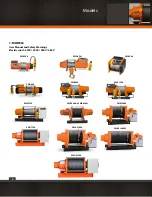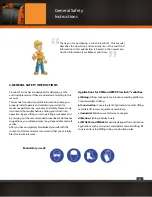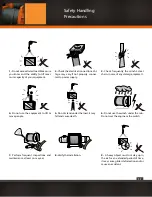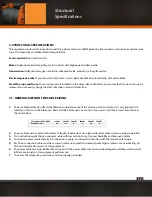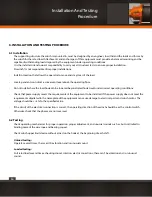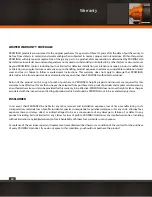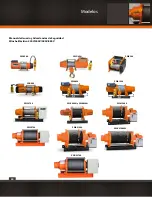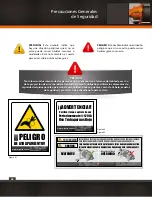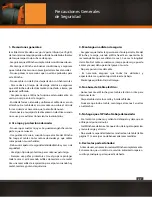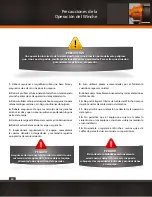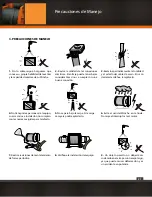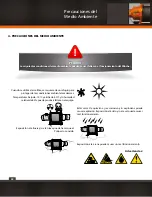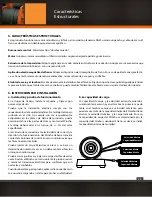
18
1. Non functioning
a. Power supply.
b. Check the Emergency Stop Switch.
2. Produces noises but is not functional
a. Check the brake coil and/or circuit.
b. Check the Switch and replace the wire rope.
c. Check for faults in the Power Supply.
3. Low velocity and vibration
a. Shortcut in the ignition capacitor.
b. Contact of the centrifugal switch.
4. Ignition failure
a. Check the brake coil and/or circuit.
b. Ignition capacitor.
c. Worn brake disc.
5. Brake failure or lubricant spill
a. Brake coil.
b. Brake disc.
c. Metal brake disc.
d. Brake spring.
e. Possible brake action due to voltage drop.
6. Reversed direction (The e-phase equipments)
a. Phase reversal
7. Electric leakage
a. Check ground connection
b. Internal circuit wiring is touching the equipment’s case.
Check electrical wiring and replace or repair if necessary.
8. Unusual noise
a. Lubricate all moving parts, using recommended
lubricators.
b. Worn gears or bearings. Check and replace if
necessary.
c. Bolts or nuts loose. Check all bolts and nuts and
tighten them properly.
9. When pressing the switch, engine noise is heard,
but it does not turn
a. Insufficient voltage from power supply.
b. Power wire rope lenght is to large.
c. Burned brake coil.
9. TROUBLESHOOTING AND POSSIBLE SOLUTIONS
Before using Prowinch® Winch, check the drum to ensure that the wire rope is coiled properly. To ensure that the winch operates
smoothly, test the control button. If winch fails after several attempts, check the following points:
Troubleshooting And
Possible Solutions

